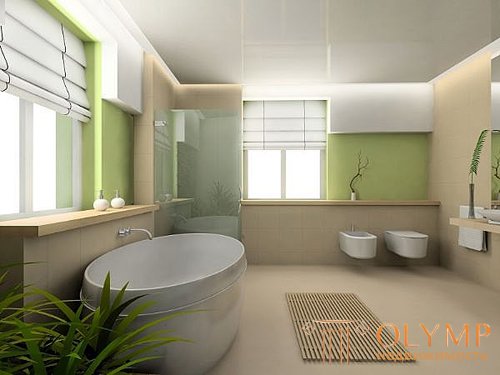
Minimalism (English minimalism from the Latin. Minimus - the smallest ) - a style in design, characterized by conciseness of expressive means, simplicity, accuracy and clarity of composition. Rejecting the classic techniques of creativity and traditional art materials, minimalists use industrial and natural materials of simple geometric shapes, neutral colors (black, gray) and small volumes. The origins of minimalism lie in constructivism and functionalism.
The modern interior in the style of minimalism can be described as modeling the space and light using only the necessary items. The most important thing in creating such interiors is a well-planned space in which there is a lot of diffused, calm light, when it seems that the walls themselves and the ceiling are glowing, a lot of air. In order to create a feeling of breadth and spaciousness, the room, if possible, is freed from internal partitions. Large windows, saturating the space with light, connect housing with the outside world, making it part of the interior.
Minimalism is the brightest and most controversial style of the second half of the 20th century.
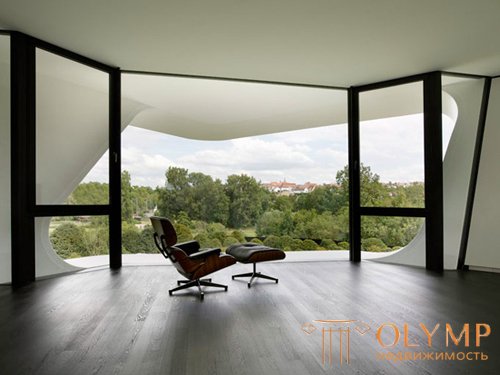
Style Minimalism in the interior, photo
Creating an interior in the style of minimalism implies:
The idea of simplicity as a synonym for artistic merit appeared in art rather late. Minimalism as a strategy was laid in the era of postmodernism, but as a tactic, as the actual poetics of the “small”, “minimum”, it crystallized out and realized its artistic independence gradually. Minimalism was formed at the beginning of the XX century in the conditions of the helplessness of art.
Historically, minimalism never existed as a separate trend in art. The style of minimalism has become widespread in architecture, painting, sculpture, music, electronic engineering and design in general.
In architecture and interior minimalism, it is primarily a simulation of space and light using only the necessary items. When there are few objects, each of them must be perfect, as well as a composite solution of the interior. The color design usually uses one or two colors, the main of which is white, it most emphasizes the lines of objects. The decoration, as a rule, is absent, it is replaced by functionality, which is the main feature of minimalism, thanks to which it is not only possible to live in a minimalist interior, but also to live comfortably. One of the famous projects in the style of minimalism was the project of the club village Evergreen (15 km along the Rublyovo-Uspenskoye Highway), developed by the architectural bureau Meganom, which is headed by Yuri Grigoryan.
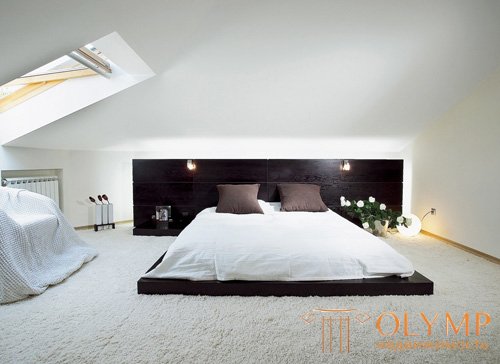
Style Minimalism in the interior, photo
All that interests you about Zatoka prices you can find on the website www.zatoka.com. In the style of minimalism there are probably more than a dozen hotels and cottages in this popular holiday destination.
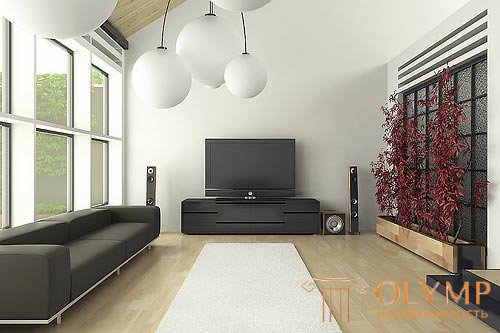
Minimalism style in the interior, photo
Minimalist lighting implies large windows for daylight access. Portieres are not appropriate here, they are replaced by vertical and horizontal blinds. Electric lighting is usually in the form of lamps with cases of polished metal, with shades of simple geometric shapes. Often used lamps with screens of pure cotton monochromatic color. Also appropriate hidden ceiling lights from neon and halogen lamps.
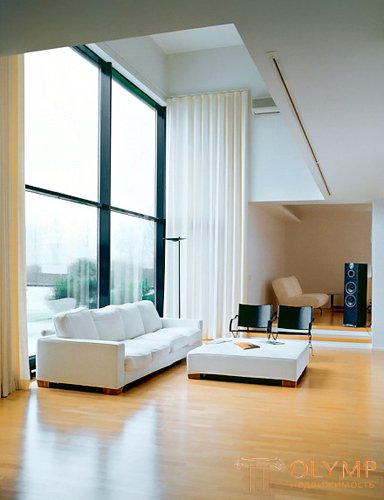
Style Minimalism in the interior, photo
The walls for the interior in the style of minimalism have a monochromatic color scheme, not more than two - three similar in shades of colors on the room. The second variant of the color solution is two contrasting colors. For the decoration of the walls used monotonous wallpaper, as an option with a not clearly defined pattern, embossed surface. Also apply textured plaster, wallpaper for painting. Very interesting minimalist interiors make inserts wall panels from natural or artificial materials, such as stainless steel, polished and textured wood, artificial and natural stone.

Style Minimalism in the interior, photo
Japanese minimalism
One of the most popular ethnic varieties of minimalism is Japanese minimalism.
There are often used partitions, screens, fabric or wooden blinds, straw mats and concise accessories - ikebana bouquets, figurines, sculpture. Zoning of the space is done with the help of floor color, translucent fabric or sliding glass with frosted glass, using lighting in the walls, floor or ceiling. Lamps, as a rule, are not visible or they are simple in form. Bamboo, rice paper lampshades and terse inclusions of stone will also look organic.
Glass shelves of shelving, glass countertops and cabinet doors seem to dissolve in the air, without taking up space. No trinkets, accessories are very few. Blinds or curtains on the windows are translucent, almost imperceptible. Light matte walls can be decorated with a small amount of Japanese graphics in thin simple frames. One more necessary attribute of such an interior is unglazed, hand-made Japanese ceramics.

Style Minimalism in the interior, photo
Such interiors are reminiscent of graphics - a laconic genre that requires skill costing the meager means of a black and white gamut. More precisely, the black color and the background, which does not have to be white, but necessarily light, contrast, in order to transfer attention to each line drawn by the artist. This genre is strict and requires an impeccable sense of proportion and style, without forgiving mistakes and fuss. Read more about Japanese minimalism here.
Что бы оставить комментарий войдите
Комментарии (0)